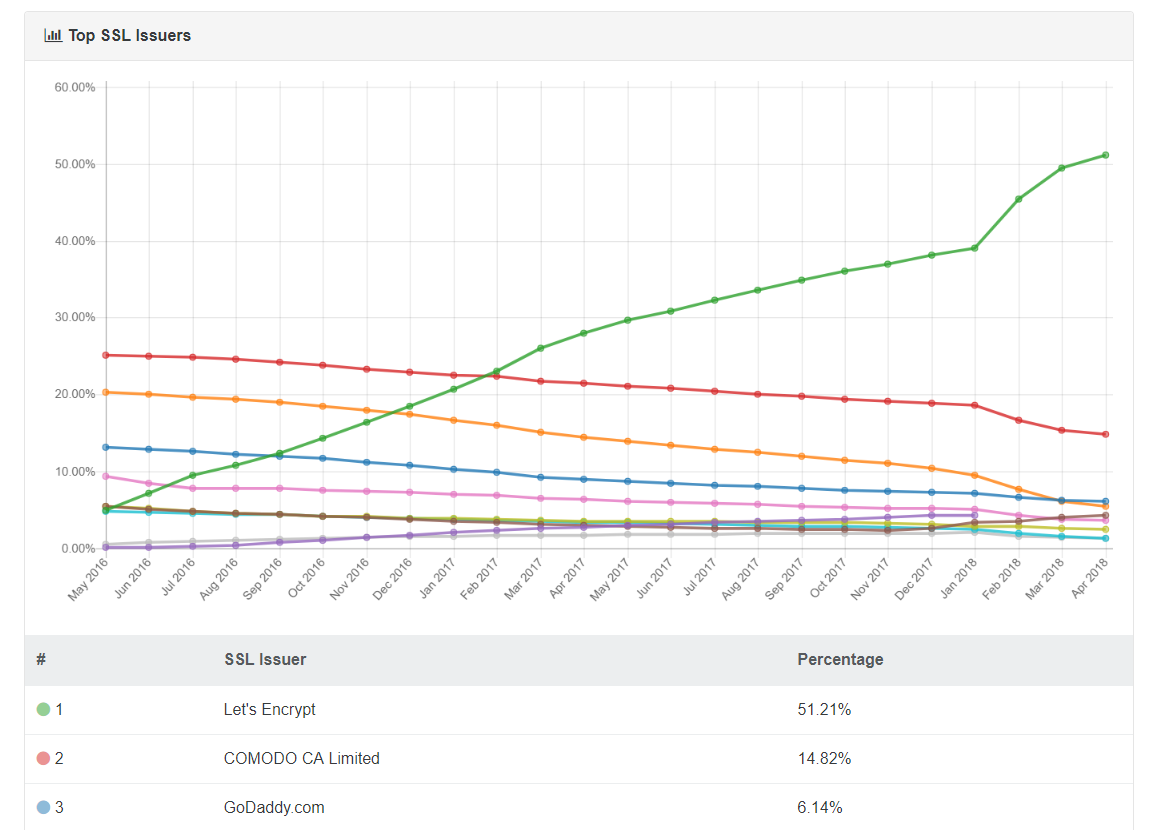The problem itself is fairly straightforward. Let’s Encrypt launched in 2016, and while it waited to have its root certificate approved and added to browsers and OSes, it reached an agreement with existing certificate authority IdenTrust to cross-sign it’s SSL certs. This meant that as long as IdenTrust’s widely deployed root certificate was on a device, then Let’s Encrypt certs would be accepted as valid by that device.
But that IdenTrust root certificate expires in September 2021, and Let’s Encrypt will transition to using its own widely deployed root certificate going forward.
Except on one operating system–Android.
Let’s Encrypt was added to Android’s certificate authority store in Android 7.1.1, released in December 2016. So devices using version 7.1.1. or newer will have no problems at all when the IdenTrust root certificate expires. Let’s Encrypt’s root cert is already included in the Android OS, and things will be fine.
The problem is that almost 34 percent of Android devices are running a version older than 7.1.1. That translates to about 845 million devices still running an OS that is more than four years old.
Let’s Encrypt found a workaround, but it’s crazy that 845 million Android devices being actively used have an OS that hasn’t been updated in four years, and that likely can’t receive updates even if their owners wanted to.
Ironically, one of the bug fixes rolled out in 7.1.1 was an update to Android’s CURL/LIBCURL libraries, which had bugs that could allow a malicious actor with a forged certificate to launch a remote code execution attack.
Hell, Let’s Encrypt’s workaround relies on the fact that Android ignores crucial security settings. Even though a root certificate like IdenTrust’s has an expiration date, Android ignores that expiration date. So IdenTrust has agreed to extend its cross-signing of Let’s Encrypt certs for three years.
IdenTrust has agreed to issue a 3-year cross-sign for our ISRG Root X1 from their DST Root CA X3. The new cross-sign will be somewhat novel because it extends beyond the expiration of DST Root CA X3. This solution works because Android intentionally does not enforce the expiration dates of certificates used as trust anchors. ISRG and IdenTrust reached out to our auditors and root programs to review this plan and ensure there weren’t any compliance concerns.
